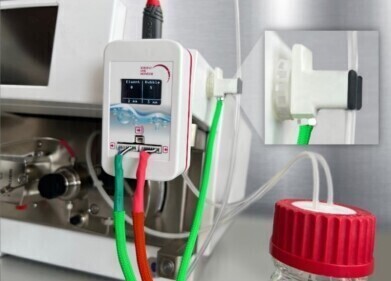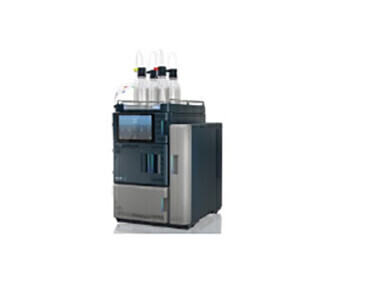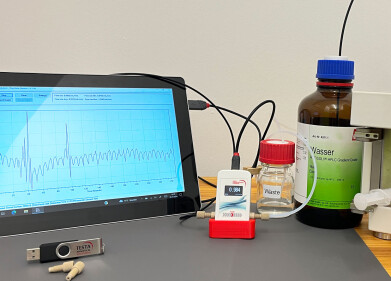HPLC
New Sterilisation Technology for HPLC Systems
Aug 26 2010
Cambridge Light Technology unveiled their new UVC sterilisation HPLC accessory, the E.L.S.A r/k1000. The unit is designed to work with any HPLC system and is especially useful for those with light scattering detectors. The E.L.S.A is designed to produce a continual sterilisation of buffer solutions by the use of UVC without the requirement for the addition of toxic materials like Sodium Azide. The unit works insuring the exposure of the buffer to UVC light whilst ensuring the user is safely shielded. The unit can use clear plastic or glass bottles in the whole range up to a 2L capacity and has a built in stirrer to provide mixing and to ensure the sterilisation effect covers the whole buffer.
The E.L.S.A model r/k1000 has been tested over a period of weeks to demonstrate the sterilisation properties of the model and to determine the lifespan of PBS buffer, know to be a good bacterial growth source, in HPLC systems. Typically the normal recommended lifespan of PBS is three days, with or without sodium azide but the E.L.S.A r/k1000 was found to prevent the formation of any visible particles up to the test limit of 28 day as against the standard PBS buffer that showed large particles forming within 2-3 days. The heating effect of the UVC source was found to be a maximum of 2°C over the entire test period. Cambridge Light Technology spokesperson said this system is safe and cost effective for all users of HPLC. For an aqueous HPLC system the unit will pay for itself by saving a single column from contamination by bacterial growth.
Digital Edition
Lab Asia Dec 2025
December 2025
Chromatography Articles- Cutting-edge sample preparation tools help laboratories to stay ahead of the curveMass Spectrometry & Spectroscopy Articles- Unlocking the complexity of metabolomics: Pushi...
View all digital editions
Events
Jan 21 2026 Tokyo, Japan
Jan 28 2026 Tokyo, Japan
Jan 29 2026 New Delhi, India
Feb 07 2026 Boston, MA, USA
Asia Pharma Expo/Asia Lab Expo
Feb 12 2026 Dhaka, Bangladesh



















